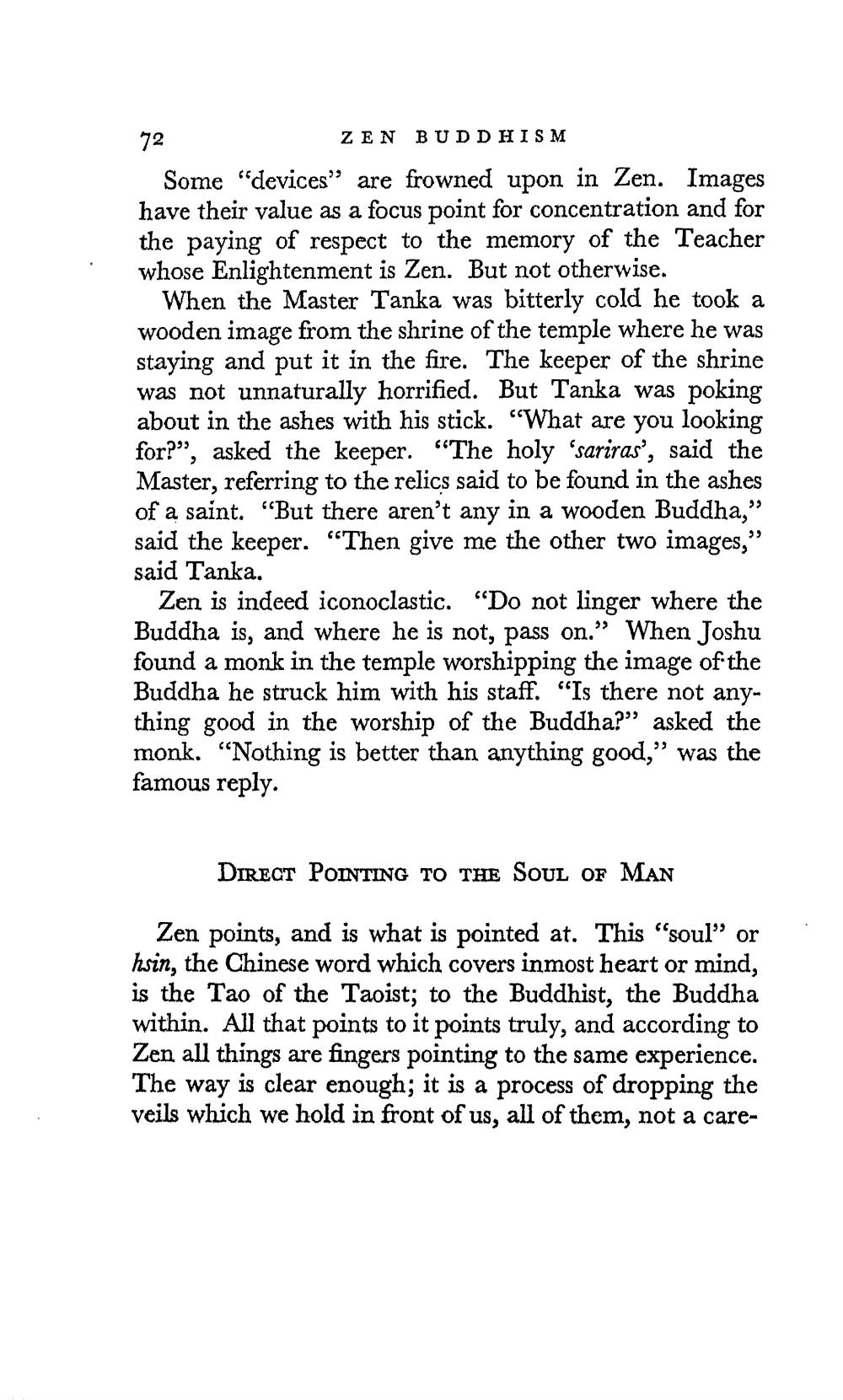________________
72
ZEN BUDDHISM Some "devices" are frowned upon in Zen. Images have their value as a focus point for concentration and for the paying of respect to the memory of the Teacher whose Enlightenment is Zen. But not otherwise.
When the Master Tanka was bitterly cold he took a wooden image from the shrine of the temple where he was staying and put it in the fire. The keeper of the shrine was not unnaturally horrified. But Tanka was poking about in the ashes with his stick. “What are you looking for?”, asked the keeper. "The holy 'sariras', said the Master, referring to the relics said to be found in the ashes of a saint. “But there aren't any in a wooden Buddha," said the keeper. “Then give me the other two images," said Tanka.
Zen is indeed iconoclastic. "Do not linger where the Buddha is, and where he is not, pass on.” When Joshu found a monk in the temple worshipping the image of the Buddha he struck him with his staff. “Is there not anything good in the worship of the Buddha?" asked the monk. “Nothing is better than anything good," was the famous reply.
DIRECT POINTING TO THE SOUL OF MAN
Zen points, and is what is pointed at. This "soul" or hsin, the Chinese word which covers inmost heart or mind, is the Tao of the Taoist; to the Buddhist, the Buddha within. All that points to it points truly, and according to Zen all things are fingers pointing to the same experience. The way is clear enough; it is a process of dropping the veils which we hold in front of us, all of them, not a care




